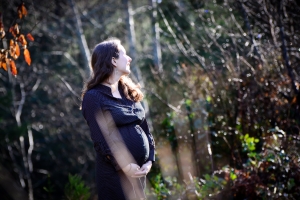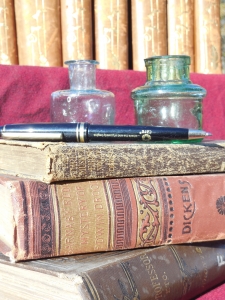Pique Reader Interest at the Start of Your Family History or Memoir
Are you puzzled about where to start your narrative? Let that question brew and jump in at whatever point you’re most familiar with—and excited about. You can back up later and start at the beginning. There are several advantages to this. You’ll get rolling and the ingredients needed for an opener will become clearer as you write and the story takes shape.

Resist the temptation to start your story with your protagonist’s moment of birth. Instead chose a scene that sets up the narrative’s theme. Seen here: Elise Cote, courtesy Penny Apple Photography.
There’s a lot riding on the first few sentences, and the first chapter in general. You want it to snap with energy and to have forward movement. You want to hook readers right from the start.
To do this you may want to start on the cusp of some big event, or right in the thick of it. Be wary, however, you don’t want to begin with the most dramatic scene of your narrative. You want to build from the opener, giving the reader increasing intrigue and motivation to continue as the story unfolds.
For most nonfiction writing it’s wise to introduce your theme, the conflict and the focal character(s) at the outset, to set the story up.
For all these reasons it can be a time saver to wait to write the beginning later. And here’s another. If you do start writing from the beginning there’s a good chance you’ll have to give it an extensive overhaul later, to suit the content and direction that emerges as you write.
Ideas for Ways to Write the First Chapter
These tips are applicable to both your first chapter and the beginning paragraphs for those that follow:
• For inspiration, type out the opening paragraphs of a few of your favourite books, preferably ones written in your project’s genre. There’s lots to learn from the masters.

Read the opening lines of some of your favourite books. What techniques did the author use to make you want to read on?
• Try a brainstorming exercise, listing all the story elements you want to include in the first chapter. Do the same for the opening paragraph.
• Some professional writers suggest that great openings start at a distance, to give readers a wide angle view before you direct the focus onto a specific situation.
• Give your readers some context, so they understand what’s happening. If what you write is a puzzle or unclear, something we need background to understand, you risk losing reader interest.
• Don’t try to tell it all at once. “Take one thing at a time,” advise Kidder and Todd in their book Good Prose, the Art of Nonfiction. “Prepare the reader, tell everything the reader needs to know in order to read on, and tell no more.”
• Can you provide some clues for the overall direction and theme of the book in the opening paragraphs?
• Is there a bit of a mystery you can present here, something that piques reader interest?
• Can you open with a scene somewhere within the first few paragraphs or page? That said, if your scene material includes dialogue, it’s best not to jump straight into dialogue in that first paragraph because the reader needs some context before she can follow a conversation.
• Provide some life giving details, interlaced with sensory elements.
